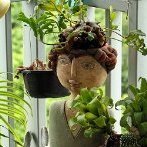A Tree Thread
-
Recently Browsing 0 members
- No registered users viewing this page.
Announcements
-
Topics
-
Latest posts...
-
99
After A Lifetime Of Adventure, Why Is It Now So Hard To Pop Off?
Never happened to me. -
532
Introduction to Personal Income Tax in Thailand
You continue to say that this forum is about fact when the notice at the top of the thread explicitly states it is not and that it is for people to express opinions. Here, once again, in a larger font, is what the notice says: "Posts made by individuals reflect their own opinions and should not be taken as fact". The bigger problem, than just your opportunistic sniping, is members general perception of the difference between tax fact and opinion, a problem that has been exacerbated by some longer term members who also are unable to always remember. So let me try and give you something to work with that might help you and others: If it's written in the Thai Tax Revenue Code (this is the book of Thai tax rules), it is fact, even if the rule or practise is dormant or the opposite is being adhered to by some. If it's not, it's opinion. Some examples of these things include: 1) There is no penalty for not filing a tax return, after breaching the threshold level, even if no tax is due - This is opinion, the facts are that penalties do exist for not filing a tax return when one is due. 2) If you are tax resident and your income is below the assessable income level, before TEDA and the tax free band are applied, you do not have to file a tax return - This is fact. 3) If you are tax resident and your income is below the assessable income level, only after TEDA and the tax free band is applied, you do not have to file a tax return - This is opinion, there is no explicit statement that suggests you are allowed to make your own tax calculations in this manner and not file a tax return as a result. 4) The response to a question asked at one branch of the TRD will be entirely complete and correct and will mirror the answers received at other branches, all of which will accurately reflect the TRD Code and TRD HQ views. - This is not fact. -
6,677
-
157
Are Older Men in Thailand Trading Love for Financial Ruin
Well from what I have seen, the ugly old farangs with the young Thai beauties would not have a chance of getting such a woman if she did not have a lot of baggage to carry with her. It is their stupid fault, but they do make me laugh when it all goes wrong. 🤣 I suppose instead of paying the ex-bar girl on a daily basis they do it monthly instead via the parents etc. -
99
After A Lifetime Of Adventure, Why Is It Now So Hard To Pop Off?
If that is what you have been doing I think you know the answer. Your prostate must have been working overtime to refill. People get diabetes when the insulin creating glands fail, presumably from too much sugar, and I suspect it's the same with the prostate. overuse it and it's going to fail. 3 times a day, good grief. -
37
Read 'em and weep: Congressman Matt Gaetz Resigns 'Effective Immediately'
Two words - Recess appointments -
1,940
What Movies or TV shows are you watching (2024)
Are you going to tell us next week that episode 7 is out? And a week later episode 8? -
17
THAILAND LIVE Thailand Live Saturday 16 November 2024
15 Year Old Stabs Rescue Volunteer in Broad Daylight, Blames Influence of Cannabis An incident unfolded when a 15 year old teenager attacked a rescue volunteer with a screwdriver at a convenience store on Pracha Uthit Road, Thung Khru District, Bangkok. The young assailant admitted to the attack, explaining that he was under the influence of cannabis at the time. Full story: https://aseannow.com/topic/1343705-15-year-old-stabs-rescue-volunteer-in-broad-daylight-blames-influence-of-cannabis/
-
-
Popular in The Pub
.png.3b3332cc2256ad0edbc2fe9404feeef0.png.8488ab72b8bb2e508209bfe3211b6e08.png)






Recommended Posts
Create an account or sign in to comment
You need to be a member in order to leave a comment
Create an account
Sign up for a new account in our community. It's easy!
Register a new accountSign in
Already have an account? Sign in here.
Sign In Now